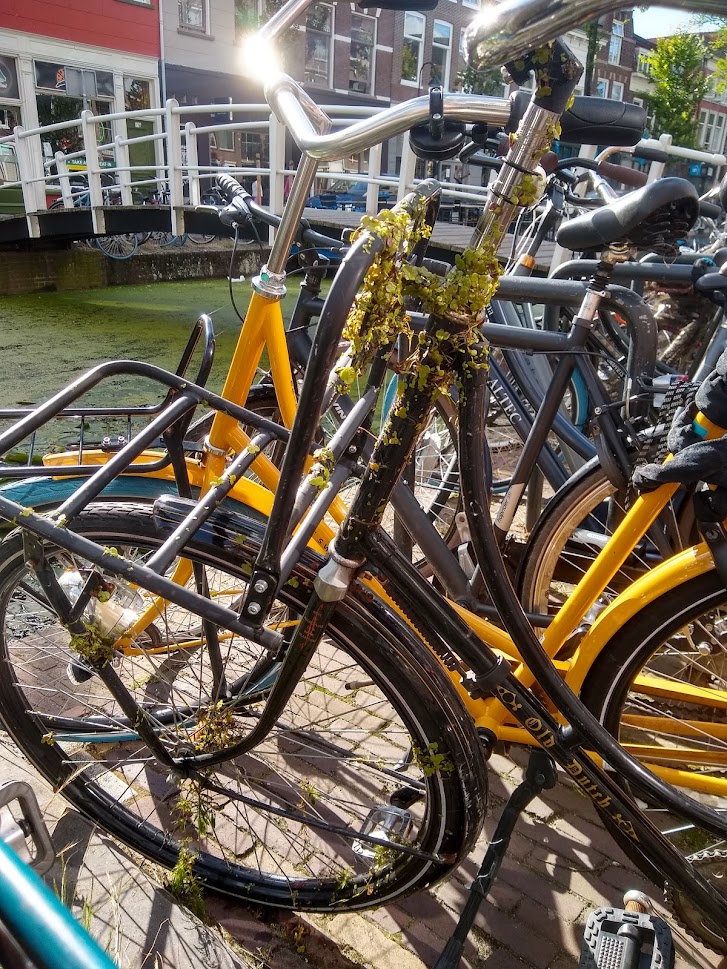Physical Address
304 North Cardinal St.
Dorchester Center, MA 02124
Physical Address
304 North Cardinal St.
Dorchester Center, MA 02124

A few weeks ago the Times reported that Lloyds Banking Group had purchased 45 new homes to let in Peterborough. This is part of a plan for Lloyds to own 50,000 homes by 2031. Given the median home in the City is now worth over 7 times the annual earnings of the typical resident, it is understandable why people would be upset. Indeed, why should a huge corporation be able to buy up all the properties in the City, when its own residents can’t afford to buy a new home there? However, this outrage is misdirected. Lloyds buying a few thousand homes over a decade will do nothing compared to the astronomical effect that NIMBYism and our planning system has had on house prices. The reason for this lies in a piece of legislation called the Town and Country Planning Act. This law abolished the automatic right to develop regulatory compliant housing, and added an additional stage of planning permission. As a result, it became mandatory for one to require state permission to build on one’s own land. Over the years this system has morphed into an almost quasi-right to block others’ construction giving residents the ability to stop others from moving into their area. This chiefly benefits homeowners – the people who engage the most in the planning system – since new houses will slow down the speed their own home’s value increases. The effect is that almost no houses get built. For example, in London during the 2010s we built around 25,000 houses per year; in the 1930s before the Planning Act was introduced that number was 61,500. Sadly housing just behaves like any other scarce asset. When there’s a shortage the sellers have more bargaining power and consumers are forced to pay more to buy the goods. […]
One common explanation for high rents is something called “financialization.” Literally, this term of course makes no sense: any form of investment, good or bad, involves finances. But I think that the most common non-incoherent use of the term is something like this: rich people and corporations have decided that real estate is a good investment, and are buying it, thus driving up demand and making it more costly. But if this is true, to blame financialization for high rents and sale prices is to confuse cause and effect. If real estate prices weren’t going up, it wouldn’t make sense to buy buildings as investment. Thus, high housing costs cause financialization, not vice versa. In fact, if government did not restrict housing supply through zoning, financialization would be a force for good. Why? Because instead of buying existing buildings, people with money might be more willing to build new buildings for people to live in- which in turn might hold housing costs down. PS I am running for Borough President of Manhattan, and am gradually creating a Youtube page that addresses anti-housing arguments in more detail.

Hayek says that planning is the road to serfdom. Holland may be the most thoroughly planned country on earth - and it's delightful. How does a market urbanist respond to excellent planning?

In the standard urban growth model, a circular city lies in a featureless agricultural plain. When the price of land at the edge of the city rises above the value of agricultural land, “land conversion” occurs. In the real world, we’re more likely to call it “development” and it is, of course, a lot more complicated. Simplification is valuable and gives us more general insights. But is greenfield development complicated in ways that are interesting and might change the results of urban economic models? Or that might change the ways we think or talk about development policy? Witold Rybczynski’s 2007 book Last Harvest helps answer these questions. It tracks a specific cornfield in Londonderry, Pennsylvania, from the retirement of the last farmer to the moving boxes of the first resident. With its zoomed-in lens, Last Harvest answers (or at least raises) lots of questions that are interesting but not especially important in the grand scheme: Why do expensive homes mix some top-line finishes with cheap, plasticky ones? Why do anti-development communities permit any subdivisions at all? What is ‘community sewerage,’ and how does it work? Exactly who thinks it’s attractive to have brick and vinyl cladding on the same house? What’s it like to buy a house from a national homebuilder? Does Chester County really produce forty percent of America’s mushrooms? The Stack Rybczynski does not use this term, but what he describes is part of what I call the “stack” of housing supply. One of the central facts of development is that it relies on a very long chain of industries and professions, each of which relies on every other part of the stack doing its job. If one part is left undone, nobody gets paid: ‘Without a water contract, we can’t get a permit for the water mains, […]
Headlines last month proclaimed that “Cities Have Grown More Diverse, And More Segregated, Since the 90s.” The headlines originate in the key findings of a new, detailed study from the Othering and Belonging Institute (OBI) at UC Berkeley. The study leans heavily on a relatively new metric – the Divergence Index – which has impressed many researchers (myself included) with its versatility. But now that we have seen the Divergence Index in action, its versatility clearly comes at a cost: the Divergence Index conflates what we would intuitively call diversity with “segregation.” As a result, more-diverse metro areas are usually ranked as more segregated by the Divergence Index. And as America became far more diverse over the past 30 years, it is logical that the Divergence Index would rise in most metro areas. Why is it so hard to measure segregation? Racial segregation is easy to see. You walk down the street and almost everybody in one neighborhood looks different than you and almost everybody in another neighborhood looks the same as you. The human eye and ear can also distinguish categories that are meaningful in some contexts but not others. Everybody but me in the café where I watched European soccer last week appeared to be not only Black but specifically Ethiopian. Was that café integrated or segregated? I certainly felt welcome as I bantered at the bar with an Ethiopian-American tennis instructor. But statistically, the café was far more Black and vastly more Ethiopian than the D.C. region as a whole. In this context, “segregation” refers to places where one group is overrepresented – like the café – not to the legal regime that imposed second-class citizenship and pervaded every aspect of life for black Americans. Given the word’s loaded history, it would have been wiser for social […]
Over the years, I’ve heard a wide variety of arguments against new housing. One of them is the “mysterious foreign investor” argument. According to this theory, new urban housing will all be bought up by billionaire foreign investors, who will purchase the property and never rent it out, thus preventing the new housing from increasing supply. (I have rebutted the argument here).* A variation of the argument is that because some high-end housing is vacant, supply is therefore adequate to meet demand. (I have addressed this idea here). Another argument is that housing markets are segmented: that if you increase the supply at the top of the market, it will not help anyone who is not already at the top of the market. It seems to me that these arguments contradict each other: the first argument is based on the idea that high-end housing does affect the market as a whole (or would if rich people stopped using apartments as second homes); the second is based on the idea that high-end housing doesn’t affect the rest of the market at all. *In addition, I have recently published a much longer article in the New Mexico Law Review, discussing the pros and cons of high-end condos.
There was an interesting article in the New York Times magazine this week on the rise of extended stay hotels, which specialize in renting to a group within the working poor- people who have the cash for weekly rent, but cannot easily rent traditional apartments due to their poor credit ratings. This seems like a public necessity – but even here the long arm of big government seeks to smash affordability. The article notes that Columbus, Ohio “passed an ordinance that subjects them to many of the same regulations as apartments” because “The hotels had an unfair competitive advantage.” In other words, the city is basically rewarding landlords for turning out bad-credit tenants, and punishing the hotels who seek to house them.
The best book on zoning and NIMBYism you’ve never read might well be The Housing Bias by Paul Boudreaux. The author is a law professor, but you’d be forgiven for thinking he’s a journalist. His writing is engaging – and occasionally funny – and he does what is unthinkable for many scholars: drives to various places to interview people who are engaged in the (legal) drama of what we now call “the housing crisis.” Boudreaux had the misfortune of being ahead of his time. The housing market was so soft in 2011 that his book landed with nary a sound. A quick web search turned up no book reviews besides the publisher’s blurbs. The book (and you’ll be forgiven if you stop reading right here) will set you back. That’s unfortunate. Just a few years later, the book would have connected with passions shared by the rapidly growing YIMBY movement and a publisher would have marketed it to the masses. Boudreaux’s thesis is that “the laws that govern our use of land are biased in favor of one specific group of Americans—affluent, home-owning families—who least need the government’s help.” He keeps his ideological cards close to the vest. But that’s the point: one need not lean left or right to want to stop using the power of the state to comfort the comfortable and afflict the afflicted. The first chapter is the most important, because it lays out the foundation for all that local governments do, good and bad, in land use: the police power. He’s writing from Manassas, Virginia, where “restaurants with Aztec pyramids on them” telegraph the large Hispanic immigrant community. A vocal minority opposed this local immigration, and pressured local governments to stop it. Of course, the city doesn’t issue passports, but the police power allows local […]

Christian Hilber and Andreas Mense argue that the price to rent ratio only increases with a demand shock where supply is sufficiently constrained

After over a century, Berkeley, California may be about to legalize missing middle housing – and it’s not alone. Bids to re-legalize gradual densification in the form of duplexes, triplexes, fourplexes, and the like have begun to pick up steam over the last several years. In 2019, Oregon legalized these housing types statewide while Minneapolis did the same at the city level. In 2020, Virginia and Maryland both tried to pass similar legislation, though they ultimately failed. This year, though, Montana and California may pick up the torch with their own state bills (even while the cities of Sacramento and South San Francisco consider liberalizing unilaterally alongside Berkeley). Allowing gradual densification is an absolutely necessary step towards general affordability. Supply, demand, and price form an iron triangle–the more responsive we can make supply to demand, the less price will spike to make up the difference.* What I really want to focus on here, though, is less about policy and more about political economy. I believe allowing medium-intensity residential development could make additional reforms easier to achieve and change views around development going into the future. We Love What We Know More often than not, I think a generalized status quo bias explains a lot of NIMBYism. Homeowners are most comfortable with their neighborhoods as they are now and are accustomed to the idea that they have the right to veto any substantial changes. Legalizing forms of incrementally more intense development could re-anchor homeowners on gradual change and development as the norm. The first part of the story is about generational turnover. If the individuals buying homes today–and the cohorts that follow–are exposed to gradually densifying neighborhoods in their day-to-day, they’ll anchor on that as what’s normal and therefore acceptable. Moreover, if we’re debating whether to rezone an area for mid-rise […]